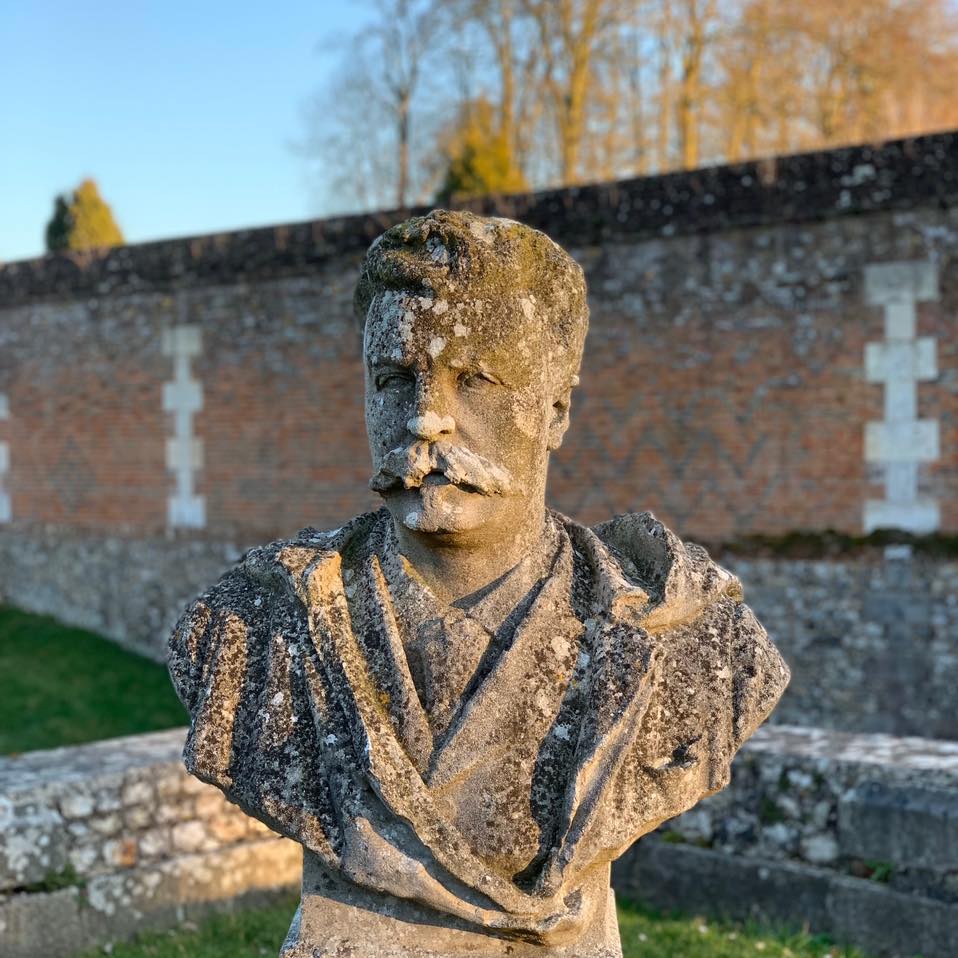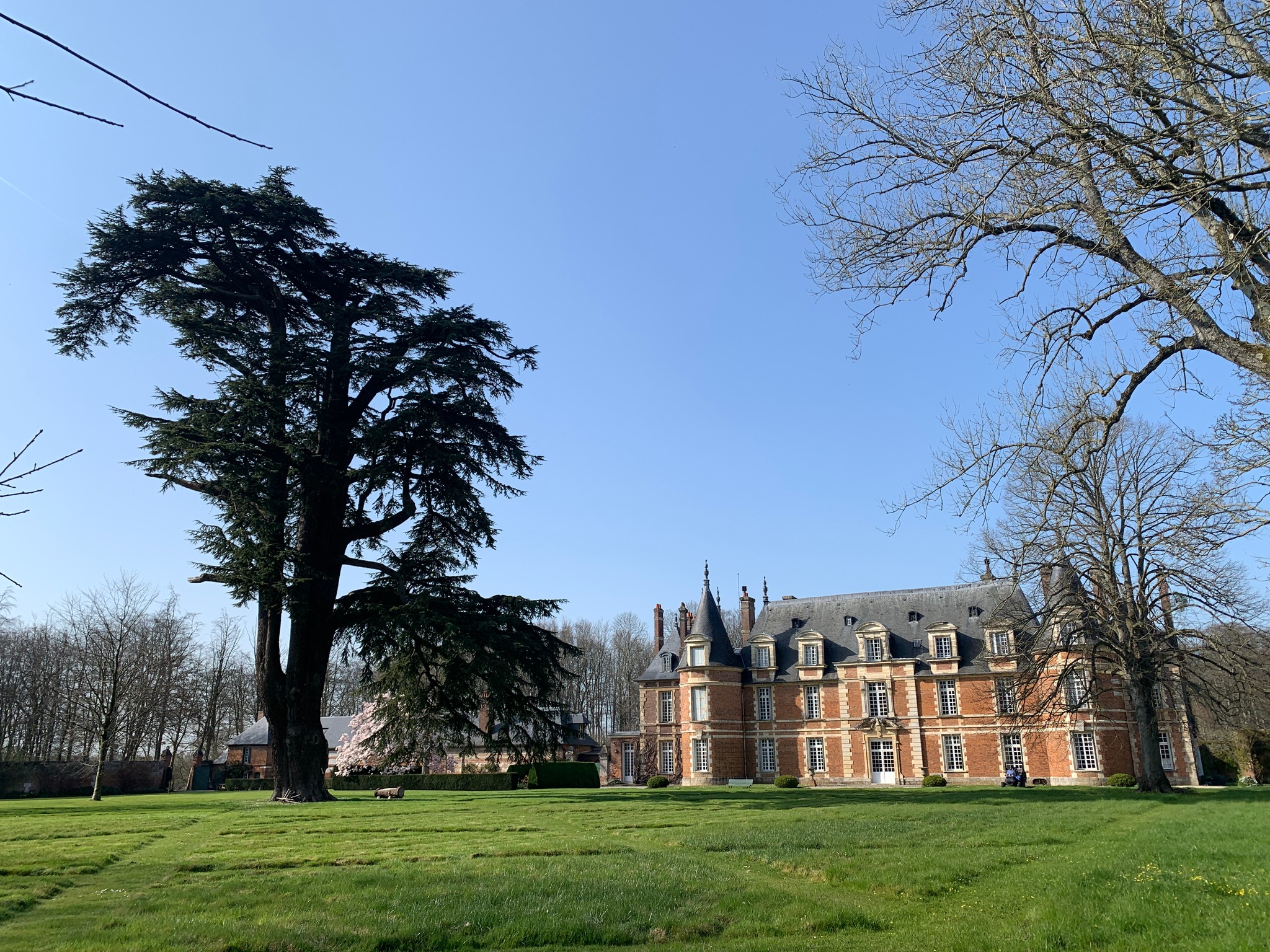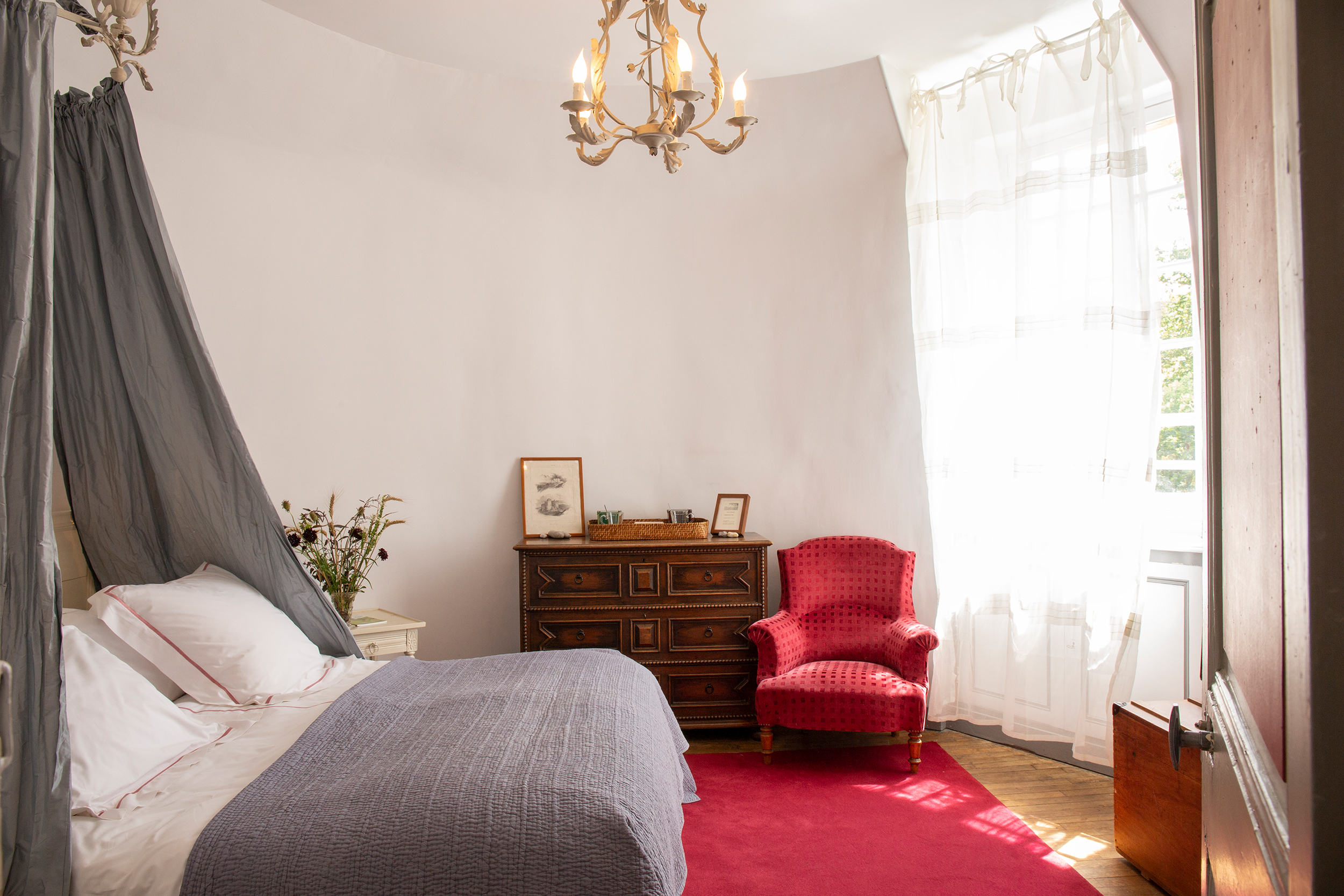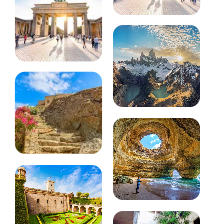Discover the Miromesnil estate near Dieppe
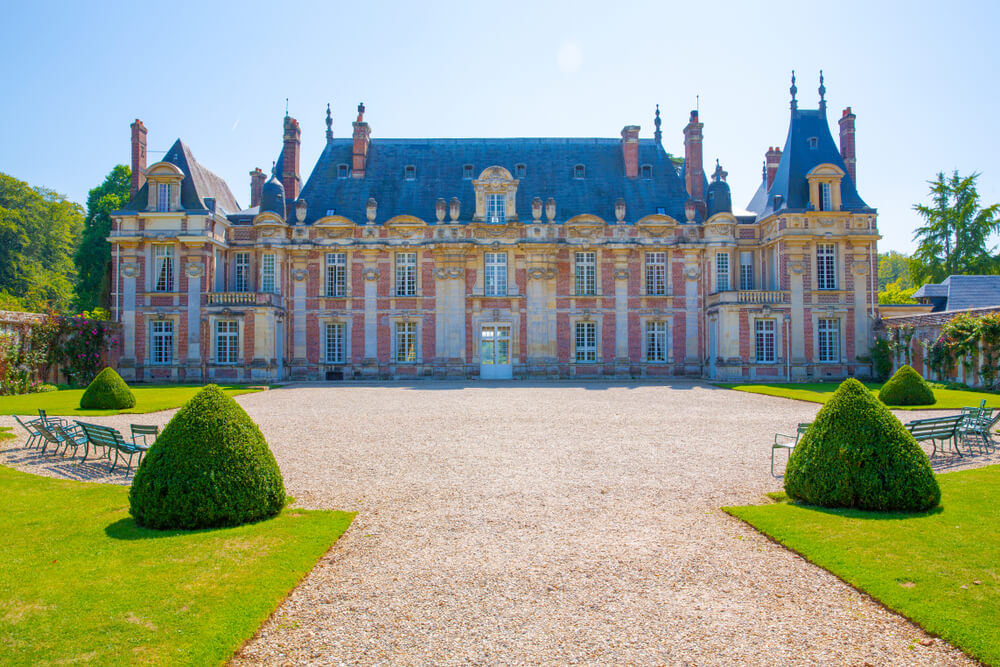
A welcoming country setting, a refined and historic atmosphere, graceful architecture and nature at its best: welcome to the Domaine de Miromesnil!
This charming address on the borders of the Normandy coast and the Pays de Caux is an inspiring and peaceful place that 30,000 visitors choose to discover every year.
And you’re curious to know why. So don’t waste any time! Scroll down the page, soak up the content and, above all, don’t miss the “prepare your visit” section so that you too can experience the pleasures of an enchanting interlude just 5 km from Dieppe!
1. The heritage of Dieppe’s hinterland
A place steeped in history…
Close to Dieppe, in the shelter of a high forest, in the heart of the Pays de Caux, lies an estate that gracefully propels you out of time, in the footsteps of the great men who lived there. It’s called the Domaine de Miromesnil!
In the beginning, which takes us back to the 12th century, Miromesnil was nothing more and nothing less than a fortified castle. It was destroyed in 1589, following the Battle of Arques between the Catholic League of the Duke of Mayenne and the Protestant Royalist army of Henry IV.
In the 16th century, as the land lay in ruins, a certain Jacques Dyel had a residential castle built there. He was the Lord of Miromesnil and Louis XVI’s Minister of Justice and Keeper of the Seals. It was to this man that we owe the drafting of the decree on the abolition of the preparatory question in prisons. Clearly, he wasn’t the first person to come along!
Between 1796 and 1895, the château was enlarged at both ends and at least 3 different owners passed on the keys. One of whom everyone knows, but we’ll be telling you all about him shortly. But be patient…
In 1938, a new chapter began with the purchase of the estate by Bertrand de Vogüé, who is none other than the ancestor of the current owner, Nathalie Romatet, who embarked on the chateau adventure in 2004 with her partner Jean-Christophe.
… And anecdotes…
Little known or, on the contrary, popular, the nods the Domaine de Miromesnil makes to French history (but not only) are the kind of juicy details that make the address even more special.
If you’re quoted ‘Boule de Suif’, ‘Le Horla’ or ‘Bel-Ami’, what personality should immediately spring to mind? It can and must be Guy de Maupassant. The man, shall we say, the most translated French writer in the world, with 300 stories, short stories, novels, travelogues… All very well, but what does this have to do with the Normandy address?
Photo Page Facebook Château de Miromesnil
Well, it was here, at the Miromesnil estate, that this leading literary figure was born on 5 August 1850. He and his parents were the happy tenants of the château until 1853. Some of the rooms in the house still pay tribute to his memory.
The Marquis Miromesnil was needed to create the Miromesnil estate. An amiable nobleman, generous to the people, but mediocre in business and unlucky in love. To put a stop to his wife’s frolicking with her lovers in Versailles, he sent his lady to spend a year in a convent with only a silver tumbler, a plate and some cutlery.
When the Marquise left the convent in 1787, the couple never spoke to each other again, and avoided every opportunity to see each other. Even in death, the Marquis deprived her of any inheritance, leaving her only the trio of belongings she had taken with her a few years earlier. You see: the silver kettledrum, the plate and the cutlery. That’s what’s known as being hard of hearing!
… Which we’re trying to preserve.
Jardin Remarquable, Maison des Illustres, Monument Historique… The Miromesnil estate has spared no effort in preserving all its magnificence, authenticity and ancient character. And what merit it has, because maintaining a château and its grounds requires three essential resources: an exclusive schedule, constant energy and, of course, a substantial amount of money.
In June 2006, the Miromesnil estate launched its own foundation, the Association des Amis du Château de Miromesnil (A.A.M). The Association’s approach is simple: to bring together all those who wish to work for the preservation of this jewel of Normandy’s heritage and thus perpetuate its cultural influence.
With nearly twenty years of work and activities under its belt, the association has improved or developed a number of brilliant projects, including
- Carrying out several roof repairs
- Organising cultural events (concerts, etc.)
- Acquiring valuable new objects to enhance the collections
- The recruitment of a cultural mediator to welcome schoolchildren.
Labels, self-help groups, step by step, the Domaine de Miromesnil continues to move with the times. Would you like to be part of this preservation adventure?
2. A brief overview of the estate
The château: a prestigious residence
You don’t need to cross the stone bridge over the dry moat to realise that you have a French heritage landmark on your doorstep.
The building consists of a central two-storey structure, extended on either side by two pavilions. All set in a mantle of orange-pink bricks.
On arrival, you’ll come face to face with the monumental Louis XIII-style north facade. It is richly decorated with mascarons, pilasters and garlands of flowers. This is in stark contrast to the Henry IV-style south facade, which has much cleaner lines.
Inside, elegance and beauty also shine through. All the rooms are furnished in eighteenth- and nineteenth-century styles, highlighting the history of fashion and tableware over the centuries.
Green spaces: an Eden of colours and scents
The vegetable garden
Photo Page Facebook Château de Miromesnil
Adjacent to the château, sheltered by brick walls, the vegetable garden at Miromesnil awakens the senses of every visitor who passes through it. And none of it would have been possible without the dedication of Simone de Voguë.
In fact, in the aftermath of the Second World War, the Countess redesigned the 2,500 m² vegetable garden, which had long been abandoned. To do this, she divided the plot into four squares separated by grass paths and grew fruit and vegetables to feed the residents. An important source of food in times of rationing! The first flowers soon made their appearance, adding a little extra cheerfulness.
It took more than thirty years for the current vegetable garden to take on its present form and content. In a constant seesaw between a geometric French garden and an untidy English garden, fruit trees, climbing plants, regional specialities and aromatic herbs are pampered throughout the year.
The park
Photo Page Facebook Château de Miromesnil
To the rear of the château, the estate’s parkland stretches in both length and width. Simple but effective, it is a vast field of lawn whose main feature is not its green colour, but its diamond shape, like that adopted by the gardens of yesteryear.
The beech grove, almost a kilometre long, is a listed natural site, with around 3,500 trees. A remarkable masterpiece of plant life, dominated by the two-hundred-year-old cedar of Lebanon, the star of the place!
The chapel: traces of worship
Nestling in the heart of the forest, not far from the 20-metre-high beech trees, the little chapel of Saint-Antoine-l’Ermite continues to live happily ever after. To look at it like this, you wouldn’t think it had been standing for 5 centuries. And yet it is the only intact trace of the original fortified castle destroyed following the Battle of Arques.
On the outside, there is a hint of austerity thanks to the use of sandstone and flint as building materials. Inside, the polychrome statues, 16th-century stained-glass windows and mouldings sum up all the richness of the sanctuary.
Scoop alert! It was in this listed site that Guy de Maupassant was baptised!
3. Preparing your visit
Now you’ve got the idea, the Domaine de Miromesnil will be an integral part of your next Normandy holiday! To help you plan your visit, here’s some practical information you need to know before heading off blindly.
Opening times and access
First and foremost, the Miromesnil estate only opens its gates 5 or 6 months of the year. The tourist season generally begins with the arrival of fine weather in early April and ends in late September/early October when autumn sets in. Occasionally, an exception is made with a few extra visits during the All Saints’ Day holidays.
As far as timetables are concerned, there are no particular difficulties to raise. Based on previous years, the estate is usually open to the public every day from 10am to 12pm and from 2pm to 6pm. Guided tours, on the other hand, are usually scheduled at specific times: 10.30am, 2.30pm and 4pm.
Please note: Unless otherwise stated, dogs are not allowed on site.
The quickest and most convenient way to get to the Domaine de Miromesnil is by car.
From Dieppe (15-minute journey), take the D915, then the D54 and the D254 before exiting at Tourville-sur-Arques.
From Rouen (45-minute journey), take the A151 then the N27 and the D108 before exiting at Calnon Hameau towards Tourville-sur-Arques.
Price list
|
Category |
Self-guided tour |
Guided tour** (in French) |
|
Adult |
8€ |
15€ |
|
Children (aged 4 to 12) |
6€ |
12€ |
|
Children under 4 |
Free |
Free |
|
Disabled person |
6€ |
6€ |
|
Groups (min 20 people) |
– |
12€/pers |
|
Group (more than 20 pers) |
– |
30€ package |
|
Friends of Miromesnil (members of the estate association) |
Free |
Free |
* : Free walk in the park and vegetable garden
** 1? hour guided tour (in French or English) of the château, chapel and gardens
Other services available: Guided tours and workshops for schools and leisure centres, children’s/family workshops during school holidays, Garden Pass (annual access to the green spaces during opening hours), “Promenade Maupassant”…
4. Tempted by castle life?
A few annual highlights
Far from being old-fashioned, each year the Miromesnil estate redoubles its efforts to make visitors appreciate its 10 hectares in a different way by organising fun and informative events. Locals and visitors alike can take part in :
- Cluedo evenings (From age 12 – April to September): based on the famous board game, participants lead the investigation by questioning suspects one by one with the aim of unmasking the culprit(s) behind the terrible crime. Price: €25/adult and €18 for children aged 12 to 18.
- The egg hunt (Easter weekend and Monday): for over 15 years, young and old have been taking part in a great treasure hunt to find 6 fictitious eggs (among the 5,000 hidden) of different colours to exchange for a chocolate prize. Price: €5 for adults, €4 for concessions and free for children under 7.
- Rendez-vous aux jardins (around June): organised by the French Ministry of Culture, this event highlights the estate’s green spaces according to a specific theme (e.g. 2023 theme: “Garden music”). Price €8/adult and free for concessions.
- European Heritage Days (3rd weekend in September). Reduced rate for all and free for under-18s.
- Christmas Market (mid-November to early December). Price: €2/person and free for under-12s.
Time for a reception
Whether you’re a company director, newly-weds or others, are you looking for the perfect place to host your guests in style? Then the Domaine de Miromesnil could be just what you’re looking for!
Since 2021, the historic Normandy site has offered a 470m² area that can accommodate up to 350 people seated, and 400 standing, under a Tuareg tent. In other words, the largest reception space available in Normandy, just for you!
Modular depending on your wishes and the type of event, this is a chic, elegant, country-style, made-to-measure package that’s sure to make a big impact.
For a weekend or more
Sleep at the Domaine de Miromesnil? Yes, yes, it’s a luxury that can be envisaged!
Nathalie and Jean-Christophe Romatet, owners of the family home, are offering to share their daily life with anyone interested. There are 5 guest rooms and 2 gîtes for those who dream of a peaceful stay in an exceptional setting.
Photo Website Château Miromesnil
Simple and refined, the rooms offer a choice of views over the park or the vegetable garden, classified as a “remarkable garden”. And when it comes to activities, you’re in for a real treat, with plenty to do nearby (fishing, horse-riding, golf, parachuting, etc.) or just a few kilometres away (excursions to the cliffs of Étretat, a cultural visit to Dieppe, a walk on the D-Day landing beaches, etc.).
Starting price for 2 people: €155/night
200 audioguided tours for cities all around the world
Download